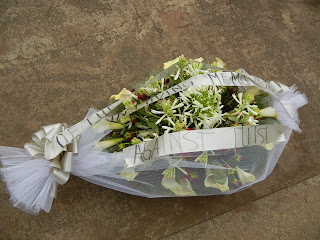On Saturday, Lizzy and I walked to the Kigali Genocide Memorial Museum. It was about an hour walk from our house but a great excuse to meander down the dirt streets that are so frequently avoided by wazungu in Kigali and snoop around MiniMarts that sell the million types of buscuits I was addicted to in Tanzania.
Upon reaching the museum, we were guided into a 5 minute movie with brief interviews of Rwandans who had experienced the genocide and their feeling behind the construction of a memorial. Kigali Genocide Memorial Museum(called Kigali Memorial by the locals) was built in 1999 to explain the genocide, provide a final resting place for those who were victims of the genocide and, serve as memorial that friends and family members could visit for prayer and peace.

Upon reaching the museum, we were guided into a 5 minute movie with brief interviews of Rwandans who had experienced the genocide and their feeling behind the construction of a memorial. Kigali Genocide Memorial Museum(called Kigali Memorial by the locals) was built in 1999 to explain the genocide, provide a final resting place for those who were victims of the genocide and, serve as memorial that friends and family members could visit for prayer and peace.

Although the museum is free to enter, you need to pay to
take pictures ($20) or listen to a guided recording ($15). Well-organized and staffed, the museum leads you step by step through the events and propoganda that brought about neighbors killing neighbors, friends killing friends and entire families being wiped up over a span of 100 days. The numbers are staggering - some 2,000 people per minute were murdered. The international community not only failed to act, but when they did, they inadvertently (or some may argue advertently) exaccerbated the situation. More than 250,000 victims are buried at the Memorial Museum.
As you move from display to display, you see quotes, pictures, stories, videos and remains of the casualties that lost their lives in the tradegy. One room consisted of hanging clothes, rows of skulls and piles of bones (not unlike the museum at Auschwitz) that provide even a meager glimpse into the sheer horror and magnitude of what happened in 1994. The current belief is that over 1 million people (mainly Tutsi but some Hutu's as well) were slaughtered during the genocide. Today in Rwanda it is illegal to say the words "Tutsi" or "Hutu" or identify people based on their ethnic group.
 |
| Family and friends gather around the coffins and pictures at a service of several genocide victums who are about to be buried at the Memorial Museum. |
 |
Lizzy and I recorded our reactions to the museum in this brief video.

